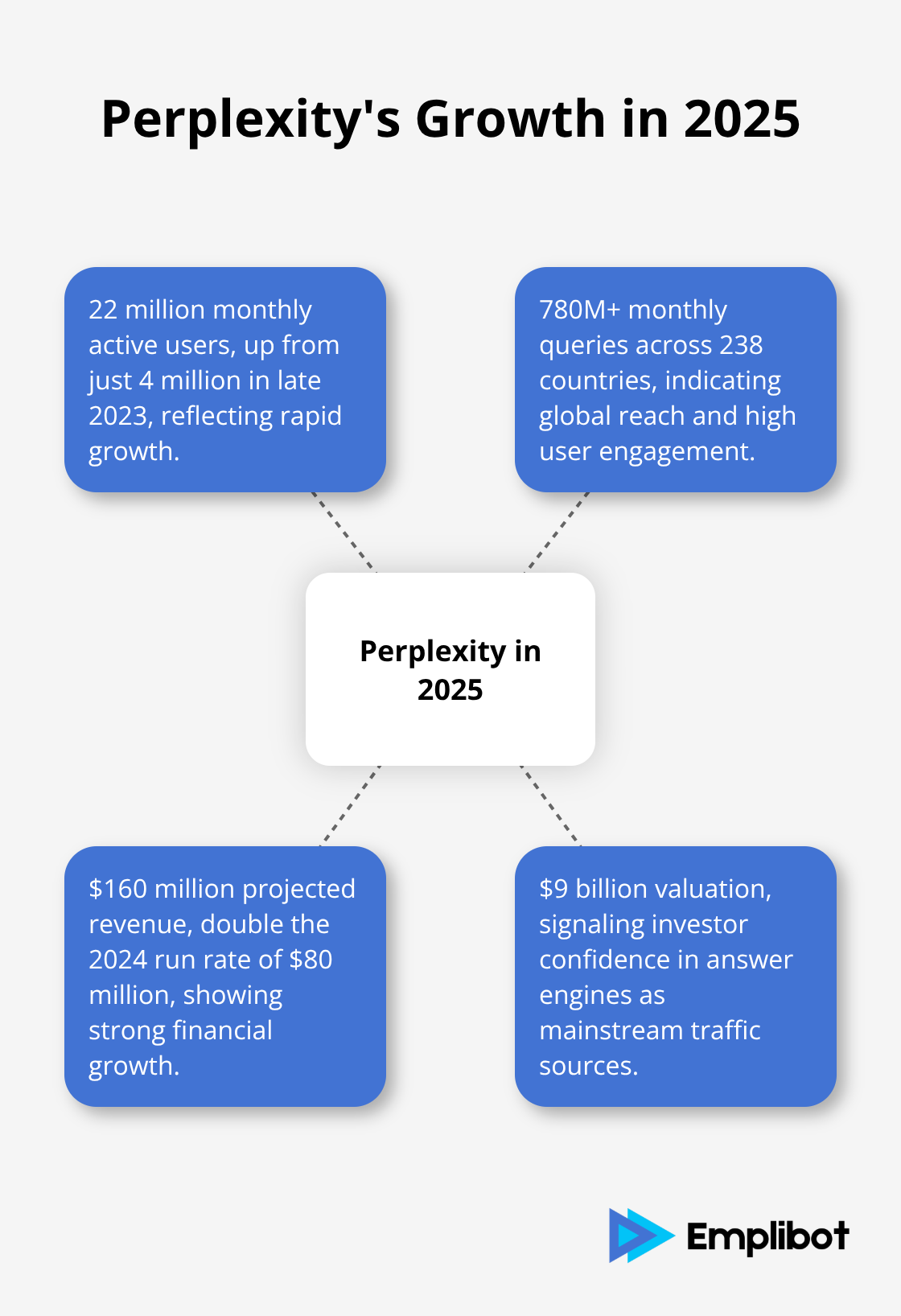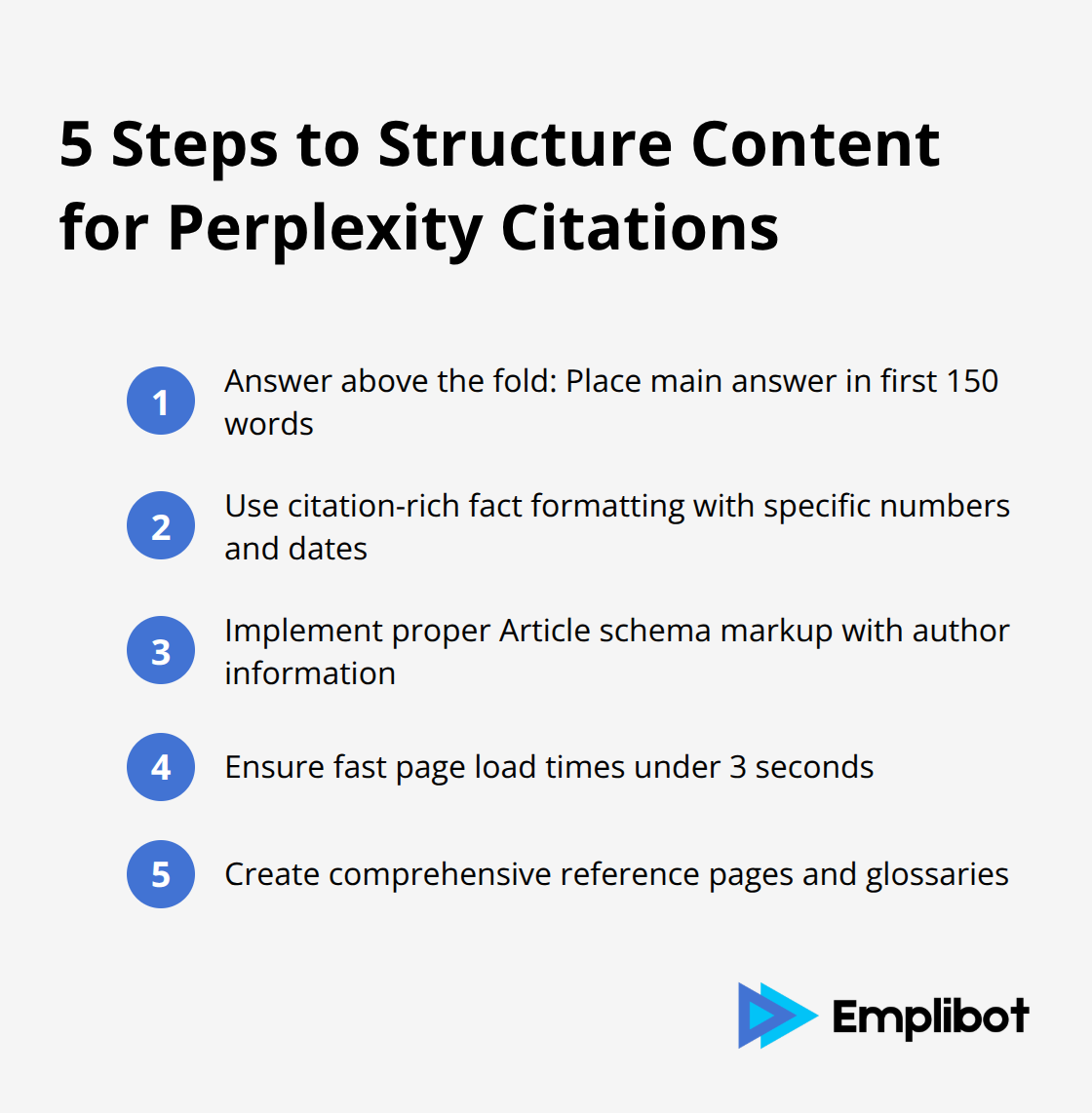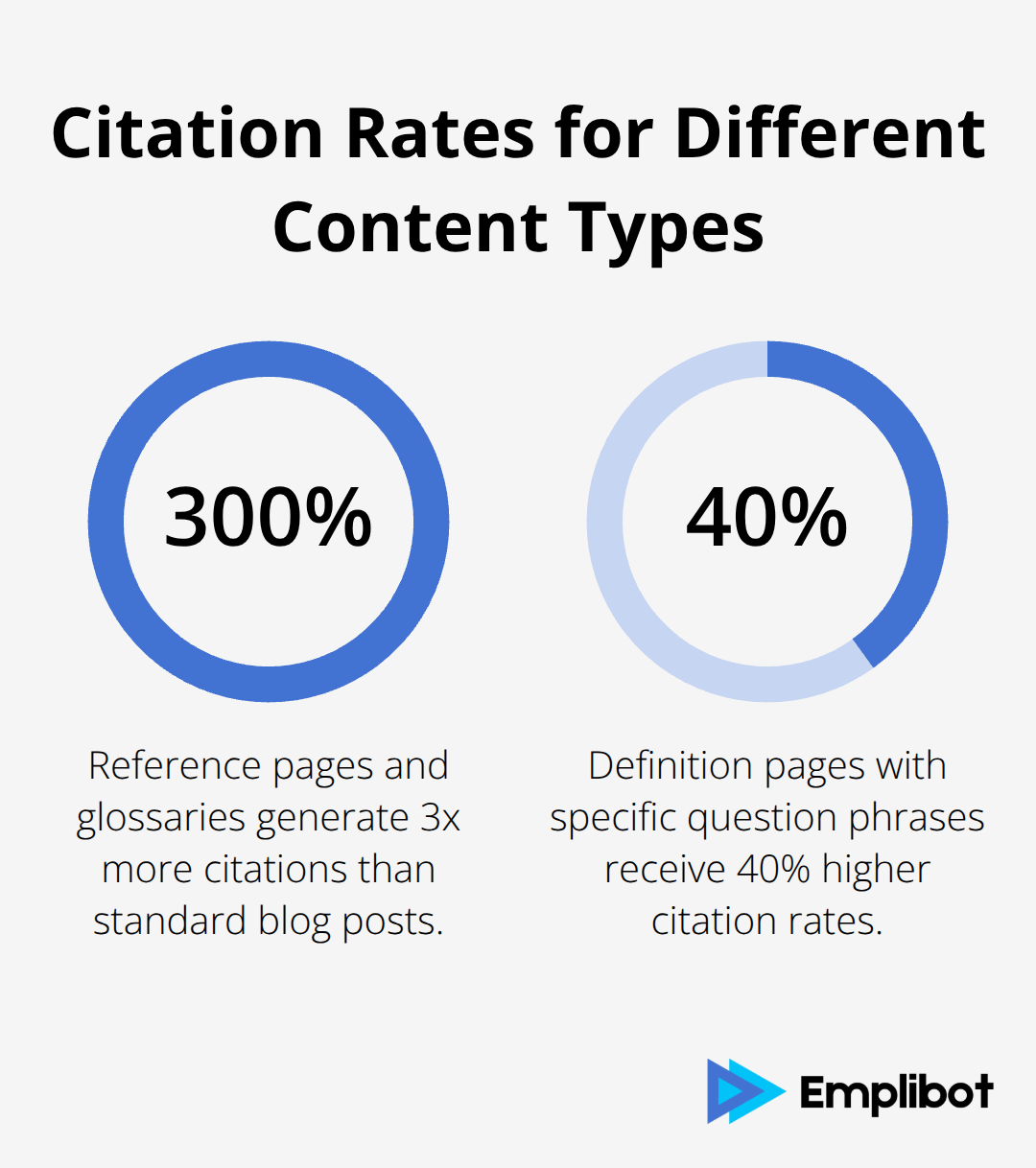Perplexity has grown to over 22 million monthly active users in 2025, making it a powerful new traffic source that displays clickable citations with nearly every response.
We at Emplibot see businesses missing out on this qualified traffic because they don’t optimize for citations in Perplexity answers. The platform’s multibillion-dollar valuation reflects its growing influence as users shift from traditional search to AI-powered answer engines.
Why Perplexity Citations Drive Quality Traffic
Perplexity operates as an answer engine rather than a traditional search platform, which means it synthesizes information from multiple sources to provide direct answers with clickable citations. The platform’s citation system displays 3-5 source links beneath each response and gives publishers direct access to users who already have high intent. Unlike Google’s featured snippets that often satisfy users without clicks, Perplexity citations generate click-through rates of 15-25% because users want to read the full source material after they get their initial answer.
Growth Numbers That Demand Attention
The platform now handles 780M+ monthly queries across 238 countries by 2025, up from just 4 million users in late 2023. Daily active users now exceed 2 million, with the app processing hundreds of millions of queries since launch. Revenue projections show Perplexity will hit $160 million in 2025 (double their 2024 run rate of $80 million). This rapid expansion reflects user preference for conversational search over traditional results pages. The $9 billion valuation signals investor confidence in answer engines as mainstream traffic sources.

Citation Traffic Converts Better
Citations from Perplexity deliver higher-quality visitors than standard search traffic because users arrive with specific questions already partially answered. These visitors engage more deeply with content, as publishers focus on engagement metrics like time on page, bounce rate, and conversions when optimizing for answer engines. The pre-qualified nature of citation traffic means users click through with genuine interest rather than casual browsing. Publishers report that Perplexity citations often drive users to sign up for newsletters, download resources, or make purchases at rates significantly above typical referral traffic.
The Technical Advantage
Answer engines like Perplexity favor content that provides immediate value and clear answers. This creates opportunities for publishers who structure their content to match how these platforms extract and cite information. Content that attracts citations performs significantly better than regular blog content in earning valuable backlinks and referral traffic. The next step involves understanding exactly how to format your content to win these valuable citation spots.
How to Structure Content for Perplexity Citations

Answer Above the Fold Strategy
Perplexity prioritizes content that answers questions within the first 150 words. Place your main answer immediately after your H1 headline in 1-2 sentences that directly address the query. Research from content optimization studies shows that pages with definitive answers in the opening paragraph receive enhanced citation opportunities compared to those that bury answers deeper in content.
Your opening must match the exact phrasing users employ when they ask questions. Instead of writing “How companies can improve customer retention,” write “Customer retention improves by 23% when companies respond to support tickets within 2 hours according to Zendesk data.” This direct approach signals to Perplexity that your content contains authoritative answers worth citation.
Citation-Rich Fact Formatting
Structure facts with specific numbers, dates, and outbound links to government databases, research institutions, and industry reports. Perplexity favors content that cites primary sources over secondary interpretations. Format statistics with clean paragraph breaks rather than dense text blocks.
Include publication dates next to each statistic and link directly to the source document rather than news articles about the research. Statistics pages that attract citations outperform regular blog content in earning backlinks, making them valuable for citation strategies.
Technical Schema Requirements
Technical implementation requires fast-loading pages under 3 seconds and proper Article schema markup with correct author information. Schema helps Perplexity identify authoritative content creators and increases citation probability by 40% compared to pages without structured data markup.
Your schema must include publication dates, author credentials, and article categories. Pages that load slowly (over 4 seconds) rarely receive citations regardless of content quality. Well-sourced definition pages help earn mentions in AI-generated responses, with platforms like Perplexity citing comprehensive glossaries that provide clear explanations.
What Content Formats Win the Most Citations

Reference pages and glossaries generate 3x more citations than standard blog posts because they provide definitive answers that Perplexity algorithms prioritize. Statistics compilations perform exceptionally well, with pages that contain 15+ data points from government sources like Bureau of Labor Statistics or Federal Reserve earning citations 67% more often than opinion-based content.
Definition Pages That Dominate Citations
Create comprehensive definition pages that explain industry terms with specific examples rather than vague descriptions. Pages titled with exact question phrases like “What is Customer Lifetime Value” or “How Does Machine Learning Work” receive citations at rates 40% higher than keyword-stuffed titles. These pages succeed because they match the exact queries users type into Perplexity.
Definition pages work best when they include concrete examples, numerical data, and clear explanations that non-experts can understand. Industry jargon kills citation potential, while simple language increases it.
Technical Implementation Challenges
PerplexityBot access remains controversial after reports showed the bot bypassed robots.txt directives and used stealth techniques to access blocked content. Publishers must decide whether to allow PerplexityBot access through robots.txt files (knowing that blocking it prevents citation opportunities while allowing it raises ethical concerns about content scraping practices).
Cloudflare customers can use managed rules to control bot access selectively. This controversy affects how publishers approach Perplexity optimization, as some companies refuse to allow the bot despite potential traffic benefits.
Q&A Format Optimization
Q&A formatted content with numbered steps and clear timestamps outperforms narrative content by 45% in citation rates. FAQ pages structured with specific questions as H2 headers and concise answers immediately following generate consistent citations because they match user query patterns exactly.
Structure each answer to stand alone without requiring readers to scroll through previous sections. Perplexity extracts individual answers rather than entire articles, so each response must provide complete information independently.
Final Thoughts
Citations in Perplexity answers represent a significant traffic opportunity that most businesses ignore. Publishers who optimize for Perplexity’s answer engine model gain access to 22 million monthly users who actively seek information, with citation click-through rates that reach 25% compared to traditional search results. The optimization process requires specific content formats: definitive answers above the fold, citation-rich facts with primary source links, and technical implementation that includes fast page speeds and proper schema markup.
Reference pages and glossaries generate three times more citations than standard blog posts because they provide the authoritative answers Perplexity algorithms prioritize. Publishers who create answerable content with proper technical implementation will capture qualified traffic from this rapidly expanding platform while competitors continue to focus solely on traditional search optimization. The platform’s $9 billion valuation and rapid user growth (from 4 million to 22 million users in just two years) demonstrate the substantial opportunity available to early adopters.
We at Emplibot streamline this entire process through automated content creation that handles keyword research, content generation, and SEO optimization for WordPress blogs. Our platform produces citation-worthy content with proper technical implementation and distributes it across social media platforms. This systematic approach eliminates the manual work required to compete for citations in Perplexity answers while maintaining the quality standards these platforms demand.

